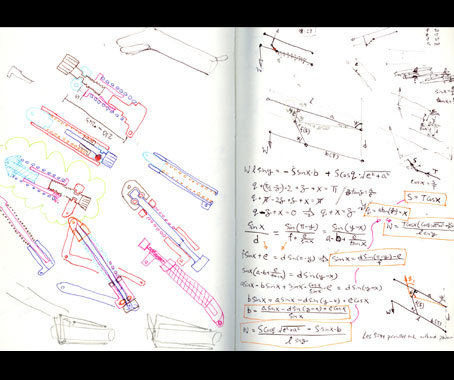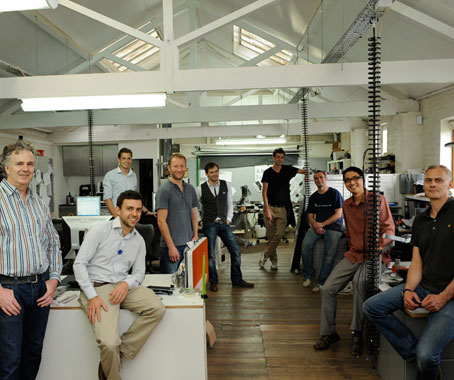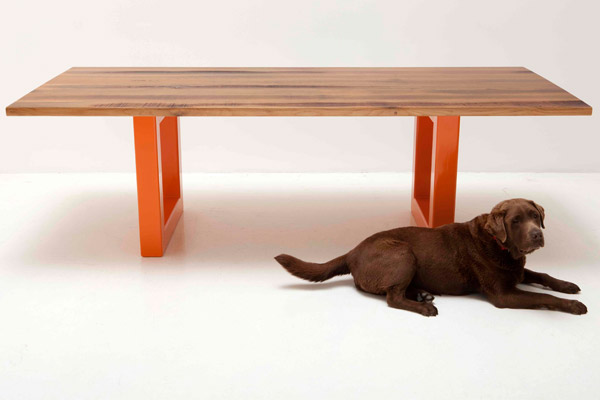Indesignlive meets the design team at CBS and takes a glimpse behind the scenes, exploring the design processes that have brought the company to where it is today.
May 31st, 2012
CBS has design at the heart of all its products. How does the design process work at CBS?
CBS has always been a design-led company; in fact the 3 founding directors are either designers or architects, so we have a long standing design heritage and ethic here at CBS.
A lot of what we do is on 3D CAD; this enables us to quickly draw up an idea for a mechanism accurately and evaluate its potential as a possible development route.
We also use our in-house workshop facilities to make POP (proof of principal) models; these can be quick rigs that prove a single area of a design or a more in-depth, fully representative working model. This is then quickly evaluated and either modified or learned from and replaced by the next idea. This process continues in this loop until we are happy that the design fulfills the brief and of course our expectations.
Using the 3D data we can then build more accurate models which in terms of form, function and materials are fully representative of the final product. This is then cycled, tested and evaluated once again. Once we are confident in a design we add all the relevant manufacturing details required and produce 2D controlled drawings to include information such as materials specifications and tolerances required for mass production.

Describe a typical day at the office.
It tends to involve a lot of coffee! We are normally working on around 5 or 6 core design projects at any one time, so it very much depends on the particular stage a project is at. If a design is in the early phase this could involve spending time in the workshop making a physical POP model (proof of principal) to check aesthetics and proportions of form or to work-up an engineering principle to gain better understanding of how a design might function.
If the project is at the latter end it could involve more detailed design on 3D CAD to help gain a better understanding of fit and function of each individual part and how they interact with the final assembly.
Using this 3D data we would then make a full scale accurate POP model using our CNC machine or rapid prototyping techniques to make the final components in the correct material. By using these models we can then cycle test the final design to ensure it is fit for purpose before continuing with the design into manufacture.
How has your approach evolved over the years?
The main principles of designing a new product haven’t generally altered over the years; what has changed are the advances in 3D CAD software and the popularity of improving the process by using model making techniques such CNC machining and rapid prototyping techniques.
All these technological advancements ultimately help to speed up the design process and help improve the performance of the final product.
By using additional CAD programs such as FEA (Finite Element Analysis) we can now predict, with more accuracy and confidence, how a part or product will behave and potentially fail due to load fatigue before we invest in costly manufacturing tooling.
Where does the inspiration come from for a new product?
The core of an idea is initiated internally either from market research that we have undertaken, a specific client request or knowledge gained from past products we have worked on.
We are always striving to innovate and overcome new problems in existing and new key areas; this means we are always thinking about what we can do next to improve and add value in new areas.
Technology and the way in which people are using it is also an inspiration for us. The prevalence of touch screen integrated monitors and how that might change the workplace of the future is one example.

What’s next for CBS?
We are constantly looking at new ways to innovate and improve and plan to be ahead of the competition by researching future technologies and how/what people will be using.
We also have plans to develop new products in key new market sectors that we haven’t yet fully explored. Healthcare is one area; we have just launched a new product called ’Hi1’at Medica in Dusseldorf, which is a long reach hospital infotainment arm.
The arm is designed to attach to a wall over a patient’s bed and enables user access to facilities such as touch screen internet access, films and phone usage. We developed the arm utilising the same patented spring technology (albeit on a much bigger scale!) as our Flo monitor arm.
Colebrook Bosson Saunders
cbsproducts.com.au
A searchable and comprehensive guide for specifying leading products and their suppliers
Keep up to date with the latest and greatest from our industry BFF's!

In the pursuit of an uplifting synergy between the inner world and the surrounding environment, internationally acclaimed Interior Architect and Designer Lorena Gaxiola transform the vibration of the auspicious number ‘8’ into mesmerising artistry alongside the Feltex design team, brought to you by GH Commercial.

Suitable for applications ranging from schools and retail outlets to computer rooms and X-ray suites, Palettone comes in two varieties and a choice of more than fifty colours.

Sub-Zero and Wolf’s prestigious Kitchen Design Contest (KDC) has celebrated the very best in kitchen innovation and aesthetics for three decades now. Recognising premier kitchen design professionals from around the globe, the KDC facilitates innovation, style and functionality that pushes boundaries.

Channelling the enchanting ambience of the Caffè Greco in Rome, Budapest’s historic Gerbeaud, and Grossi Florentino in Melbourne, Ross Didier’s new collection evokes the designer’s affinity for café experience, while delivering refined seating for contemporary hospitality interiors.

Born of a love of contemporary design, a quest for timbers that tell a story and a couple of chocolate labradors, The Brown Dog Furniture Company creates beautifully resolved, bespoke modern furniture from salvaged and up-cycled wood.
The internet never sleeps! Here's the stuff you might have missed

Savage Design’s approach to understanding the relationship between design concepts and user experience, particularly with metalwork, transcends traditional boundaries, blending timeless craftsmanship with digital innovation to create enduring elegance in objects, furnishings, and door furniture.

DKO’s Interior Design Director on how to create community and specificity in interior design, and how apartment living is being reconceptualised.